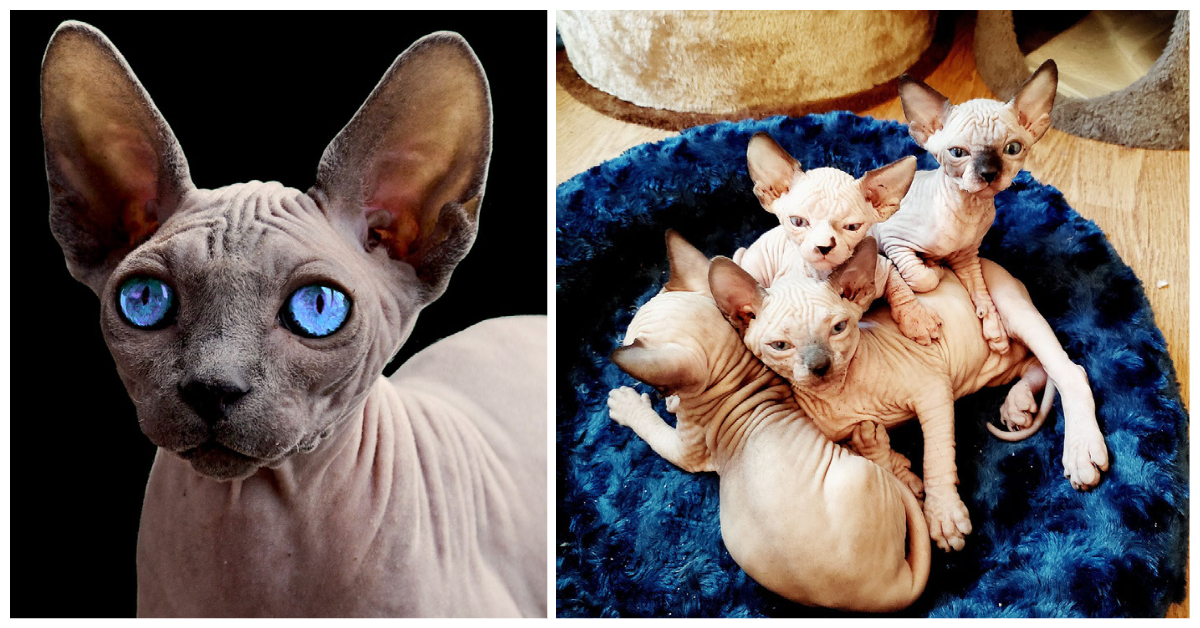Sphynx Cats are one of the hairless breeds of cats that are popular with people who have allergies to cat fur. Sphynx cats are the first breed most often associated with being hypoallergenic. Unlike other breeds with fur, the hairless Sphynx does not shed protein saturated fur around the house and thus may be better for people that suffer from cat allergies. While Sphynx cats aren’t completely hypoallergenic, they are often less likely to trigger allergy symptoms than other types of fur coated cats.
Watch the video for interesting facts about Sphynx cats and see more details below.
Interest Facts about Sphynx Cats Video
Sphynx Cats Origin
Hairlessness in certain cat breeds is a naturally occurring genetic mutation. The Sphynx breed was developed through selective breeding of animals with the genetic trait. Although hairless cats have been reported throughout history, breeders in Europe have been developing the Sphynx breed since the early 1960s. Two different sets of hairless felines discovered in North America in the 1970s provided the foundation cats for what was shaped into the existing Sphynx breed.
Sphynx Cats Personality and Behavior
Sphynx are known for their extroverted behavior and they typically display a high level of energy, intelligence, curiosity and affection for their human companions. They are considered one of the more dog-like breeds of cats. Don’t be surprised if the greet you or your guests at the door. The Sphynx breed is a highly active and affectionate companion and they enjoy entertaining. Their temperament is described as sociable, affectionate, and bold.
Sphynx Cats Size
A Sphynx cat will typically weigh in the range of 6 – 12 pounds. Some larger males will weigh up to 15 pounds. The typical Sphynx Cat has an overall height of 8”-10” (20-25 cm) and body length of 13”-15” (33-38 cm).
Sphynx Cat Skin Colors and Patterns
They come in a wide variety of color variations nd skin patterns. The skin should ideally have the texture of chamois leather. The coat may have some fine hairs, or the cat may be completely hairless. Their skin is the color that their fur would be. The Sphynx skin may have a variety of patterns and usual cat markings (solid, point, van, tabby, tortie, etc.). Without a fur coat, they lose more body heat than coated cats which makes them warm to the touch and prone to finding warm places. This cat can sunburn and should have limited direct sun exposure.
Contrary to popular opinions, it usually isn’t a cat’s hair itself that triggers an allergic reaction. Many people typically react to the cat’s saliva, dander, or natural skin oils because that’s where the major allergen in cats is found. When a cat grooms their coat, the saliva and skin oil spread over its hair and then the shedding of that allergen-coated hair along with dander into the cat’s home environment sparks the allergy symptoms. Because they don’t have hair to shed, Sphynx cats are more likely to keep their allergens to themselves. When they groom themselves, they will still collect the allergens on their bodies and they may still cause allergic reactions.
Sphynx Cats Lifespan
A healthy Sphynx cat will typically live in the range of 8 – 12 years. Some will live up to 15 years old.
Remember to share these interesting facts about Sphynx Cats with other Cat fans! For more entertaining cat videos, “subscribe” to our CatFancast Channel on YouTube.


